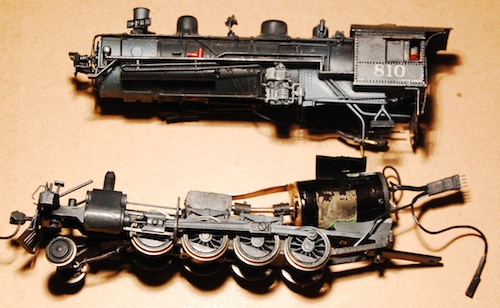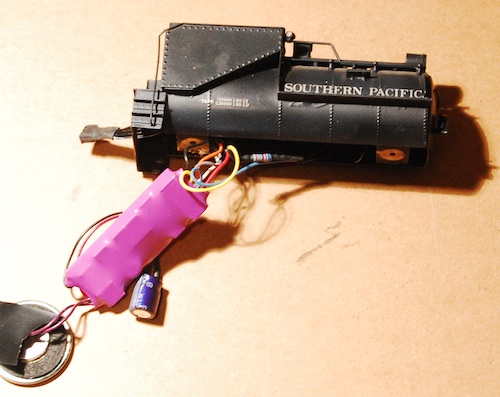M.B. Austin's SP C-10 2-8-0 dates from around 1960, just as brass locomotives were becoming seriously popular. M.B. Austin was a California-based importer, very well known for also running the "Trains-Nothing-But-Trains" hobby shop in San Mateo. I visited that store a lot as a kid, and when I got my driver's license, I was often practicing my driving by heading down there.
The locomotive's a big chunkier than some of the other 2-8-0s, and the detail's a tiny bit coarser, but it holds its own against my other brass locomotives. It also accepted a 16mm diameter can motor easily, but still has the original gearbox. You can see my usual install - a four pin plug between the locomotive and tender, and a single wire for the headlight (with the other wire of the bulb grounded on the engine's body.

The tender's the special part. Most Vanderbilt tenders are soldered shut and require huge amounts of work to install a DCC decoder. Not this tender - unscrewing a lower frame caused the wheels, frame, and weight to separate from the tank, and revealed a large slot in the bottom of the tank. It was trivial to add a Tsunami decoder in the upper reaches of the tank, with the speaker standing vertical and leaning against the end of the tank.
